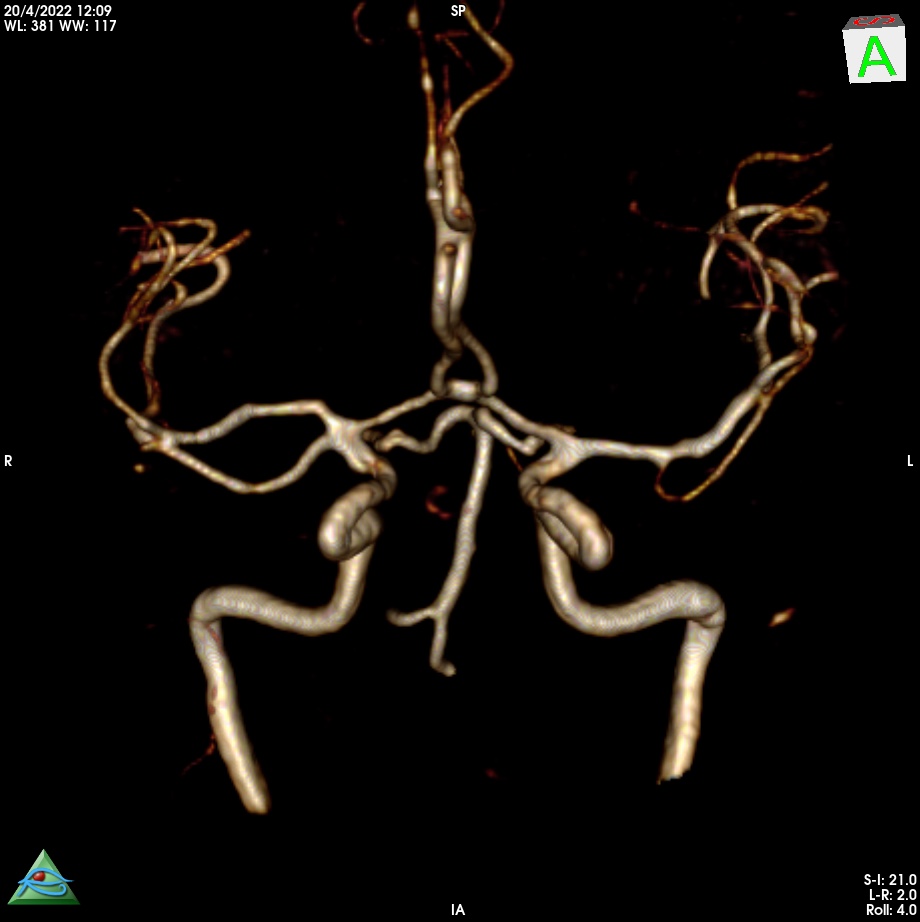

A duplicated middle cerebral artery (DMCA) is an anomalous vessel arising from the internal carotid artery (ICA). The origin of the DMCA lies between the anterior choroidal artery and the distal end of the ICA. Although there are several explanations of DMCA, its embryological origin is still an open question. Komiyama et al. proposed that the development of DMCA involves the anomalously early ramification of the early branches of the middle cerebral artery (MCA), based on their similarity to the cortical supply by the early branches of the MCA. Yamamoto et al. suggested that DMCA is a variant of the normal branching of the MCA. Kai et al. reported two types of DMCA : one with a course parallel to that of the main MCA (type A) and the other coursing toward the temporal lobe (type B).
DMCAs themselves have no clinical significance. However, rare aneurysms have been reported at the origin of the DMCA. It is unclear whether this association is a chance occurrence or is related by an unknown mechanism. Kai et al. reported that all aneurysms associated with DMCAs were found at the origins of type B DMCAs. They insisted that type B DMCAs can be expected to be subject to higher hemodynamic stress and that this is a factor in the development of aneurysms on the type B DMCA.
Reference:
Kai Y, Hamada J, Morioka M, Yano S, Kudo M, Kuratsu J. Treatment of unruptured duplicated middle cerebral artery aneurysm : case report. Surg Neurol. 2006;65:190–193. discussion 193